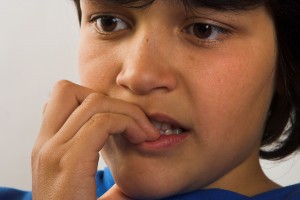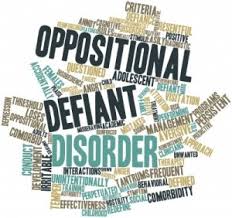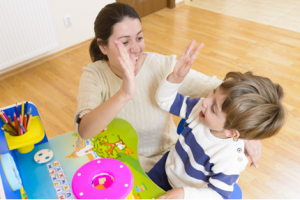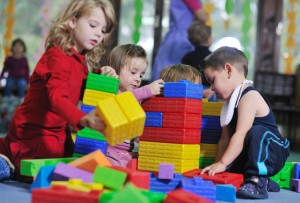Executive function is a set of mental skills that help you get things done. It is the ability to do all that it takes in order to keep your mind on what you are doing to execute a goal. Executive functioning allows us to activate awareness, self-regulate, establish goals and make long term plans, and help us stay in charge of our learning and actions. Who we are, how we organize our lives, how we plan and how we then execute those plans is largely guided by our executive system. It is the awareness and directive capacities of the mind, considered the “orchestra conductor” or “CEO” of your brain. These skills are controlled by the area in the brain called the frontal lobe.
Executive function abilities include:
- Maintaining attention
- Controlling impulses
- Keeping free of distractions
- Engaging in mental planning and problem solving
- Maintaining flexibility
- Time management
- Setting priorities
- Organizing
- Executing a task
Often adults with executive function problems are considered lazy and unmotivated, but this is far from the case. In fact, individuals with executive dysfunction try really hard to get things done. When individuals have issues with executive functioning, any task that requires planning, organization, memory, time management and flexible thinking becomes a challenge. This can affect their ability to work, maintain relationships and do things independently. It makes it difficult to keep track of time, make plans, complete tasks in a timely manner, to multitask, to apply previously learned information to solve problems, analyze ideas, and to look for help when needed. While some adults have learned some tricks or strategies to help them compensate throughout the years, many continue to fail to meet their responsibilities on a daily basis and run into trouble with their spouses, finances, or employers.
What does executive dysfunction look like?
- Difficulty getting started on a task
- Does things quickly, or incompletely
- Trouble paying attention and easily distracted
- Loses train of thought when interrupted
- Has trouble making decisions
- Difficulty multi-tasking
- Often misplaces reports
- Disorganized/messy
- Issues with organizing materials and setting schedules
- Socially inappropriate behavior
- Difficulty controlling emotions
- Difficulty processing, storing and retrieving information
- Trouble planning for the future
What is the treatment?
Cognitive behavioral therapy can provide mental tools to help an individual with self-monitoring thoughts and behaviors, organization, and teach social skills in order to appropriately respond to social situations.
Some Tips:
- Write it down
- Know (and accept) your limitations
- Educate yourself
- Have a coach – to help with organization
- Make check lists and to do lists
- Set time limits
- Set alarms
- Use planners/calendars
- Take step-by-step approaches to work
- Rely on visual organizational aids
- Organize work space
- Minimize clutter
- Ask for help
 Habit reversal training (HRT) is an evidence-based multicomponent behavioral treatment developed to address a wide variety of repetitive behavior disorders/habit disorders. It is one of the most effective non-pharmacological treatments. It involves increasing awareness of these repetitive behaviors and learning to use socially appropriate behavior instead.
Habit reversal training (HRT) is an evidence-based multicomponent behavioral treatment developed to address a wide variety of repetitive behavior disorders/habit disorders. It is one of the most effective non-pharmacological treatments. It involves increasing awareness of these repetitive behaviors and learning to use socially appropriate behavior instead.
What are repetitive behavior disorders?
- Tics
- Tourette’s Syndrome
- Trichotilimania
- Nail biting
- Thumb sucking
- Skin picking
- Etc.
Who does Habit Reversal Training work for?
- Children
- Adolescents
- Adults
3 components of Habit Reversal Training:
- Awareness training
- Increase awareness of the repetitive behavior urges and performance
- Helps person focus on instances that the behavior is likely to occur
- Helps the person gain better self-control
- Competing response training
- Develop a competing response that replaces the old unwanted behavior
- Engage in competing behavior when feel tic urge
- Must be inconspicuous and easy to implement
- Examples – squeezing a squishy ball or playing with play doh
- Social Support
- Involving family members, teachers, friends
- Provide positive reinforcement and feedback every time the person uses or practices a competing response
Other important components to the treatment are relaxation training in order to manage stress and decrease the behaviors, and generalization training to encourage practicing their new skill in different contexts.
At Manhattan Psychology Group, we treat many children and adolescents with repetitive behavior disorders with Habit Reversal Training (HRT). If you are concerned about your child’s habit, please call to schedule a consultation.
 Children who have a persistent pattern of explosive anger, irritability, arguing, defiance or vindictiveness towards their parents or other authority figures may have Oppositional Defiant Disorder (ODD). Signs of Oppositional Defiant Disorder generally begin during preschool, but can sometimes begin later in the child’s development. Without appropriate treatment, symptoms of ODD can worsen and lead to serious problems for children with ODD for their functioning at home, school, and with peers. It is not always easy to tell the difference between ODD and more common defiance that we see in all children. Although the list below can help you determine if your child may have ODD, it is always important to have your child evaluated by a mental health professional who can help determine if your child’s difficulties are best explained by ODD or another disorder.
Children who have a persistent pattern of explosive anger, irritability, arguing, defiance or vindictiveness towards their parents or other authority figures may have Oppositional Defiant Disorder (ODD). Signs of Oppositional Defiant Disorder generally begin during preschool, but can sometimes begin later in the child’s development. Without appropriate treatment, symptoms of ODD can worsen and lead to serious problems for children with ODD for their functioning at home, school, and with peers. It is not always easy to tell the difference between ODD and more common defiance that we see in all children. Although the list below can help you determine if your child may have ODD, it is always important to have your child evaluated by a mental health professional who can help determine if your child’s difficulties are best explained by ODD or another disorder.
Symptoms of ODD
- Angry and Irritable Mood: Children with ODD may often lose their temper, seem touchy or easily annoyed by others, and appear angry and resentful.
- Argumentative and Defiant Behavior: Children with ODD may often argue with adults or other’s in authority, actively defy rules, deliberately annoy people, or blame others for their mistakes or misbehavior.
- Vindictiveness: Children with ODD may show a pattern of spiteful and vindictive behavior.
What Causes ODD?
ODD is thought to be caused by biological and environmental factors. ODD tends to run in families, so it is very common for a child with ODD to have another family member who also has ODD or another psychological condition, such as Attention Deficit Hyperactivity Disorder (ADHD), substance use disorders, or bipolar disorder. Children with ODD also have differences in the part of the brain that controls judgement, impulse control, and reasoning. This means that if something frustrating happens, children with ODD are less able to come up with a good solution to solve the problem and more likely to respond quickly without thinking. The part of the brain that helps to process social information is also different in children with ODD. When a child with ODD has a neutral interaction with a peer or an adult, they are more likely to interpret the other person’s facial expressions or actions in an aggressive way, so they often feel attacked by others and instinctively respond with aggression. Lack of structure and parental supervision is also associated with the development of ODD. Children also learn from models in their life—kids who grow up in aggressive households, are physically abused, or exposed to community violence are at risk of developing ODD.
How Can a Psychologist Help with ODD?
- ODD usually improves over time; however, children with ODD may go on to develop psychological problems as adults. It is important to get treatment early.
- Parents can learn how to best respond to oppositional behavior and how to interact with their child in a way that will help the child learn how to follow directions.
- The child can learn to cope with frustration and anger in a more appropriate way and improve their communication skills.
 Here are some experiences that many parents can relate to: Your child comes to you with his math homework completed, and, barely looking up from the dinner you are preparing or the school forms you are signing, you halfheartedly say “that’s great honey”. Or maybe, after the sixth try, your child has finally tied her sneakers, but since she is at an age where she should know how to do this and you are now late for school, you quickly run out the door as soon as she is finished with a quick, “come one, we’re going to be late!” Although every parent has moments where they may feel too rushed or busy or preoccupied to take the time to give effective praise, these past missed opportunities can become future occasions for giving your child labeled praise. And in the long run, this will lead to a child who puts more effort into his homework and who ties her shoes every morning.
Here are some experiences that many parents can relate to: Your child comes to you with his math homework completed, and, barely looking up from the dinner you are preparing or the school forms you are signing, you halfheartedly say “that’s great honey”. Or maybe, after the sixth try, your child has finally tied her sneakers, but since she is at an age where she should know how to do this and you are now late for school, you quickly run out the door as soon as she is finished with a quick, “come one, we’re going to be late!” Although every parent has moments where they may feel too rushed or busy or preoccupied to take the time to give effective praise, these past missed opportunities can become future occasions for giving your child labeled praise. And in the long run, this will lead to a child who puts more effort into his homework and who ties her shoes every morning.
There are five important components to making sure that labeled praise is effective:
- Proximity. Be close to your child when you are giving praise, rather than yelling it from across the room. Your child is more likely to pay attention if you are standing near him.
- Be enthusiastic and sincere in your praise. It is important for children to see that as much energy as you put into them when they have done something wrong, you are even MORE excited and energetic when they do something well.
- Use non-verbal reinforcers such as a high five, a hug or a pat on the back. This makes your verbal statements more powerful since they are coupled with another positive reinforce.
- Be specific about what the child has done that you are praising. This is vital because it is by being specific about what the child has done well that he can learn what to do in the future. In addition, telling your child “I really appreciate how you came inside right when I asked you to” is more meaningful and shows more effort on your part than “good job”.
- Keep the praise developmentally appropriate. Keep the language, tone of voice and content of praise appropriate to your child’s level of development. For example, whereas a higher pitched, more sing-song voice is great for younger children, it can seem patronizing for older children.
But why is this important? What are the effects of doing labeled praise rather than just the more generic “great job”?
- Your child will feel better, both about you (the parent) and about himself because you are being more positive and he is learning that he is doing good things.
- An increase in the behaviors for which your child is receiving labeled praise. This can also lead to a decrease in negative behaviors because there are only so many hours in a day and if your child is spending more of their time engaging in positive behaviors, they will automatically have less time for negative behaviors!
- Increased positive feelings towards your child as you are putting more effort into thinking about what they are doing well.
Giving praise appropriately to children can be an important element in strengthening your relationship with your child and helping them to feel good about themselves as well.
 What is a Natural Consequence?
What is a Natural Consequence?
Actively working on changing a child’s behavior involves two simultaneous approaches that target both increasing positive behaviors and decreasing negative behaviors. Positive behaviors are most effectively increased through the use of praise or rewards when those specific behaviors are exhibited, while negative behaviors are most effectively decreased through the use of active ignoring or implementing consequences.
Consequences can be implemented in different ways, one of which includes natural consequences. Simply put, a natural consequence occurs when a parent chooses not to intervene and instead allows the child to experience the direct consequences of their actions. Some examples of natural consequences include the following:
- Allow a child to not do their homework at night and the natural consequence is that if it is not completed before the next school day, he will have to stay inside and complete it during recess.
- Allow a teenager to stay up past her bedtime and the natural consequence is that if she stays up too late, she will be tired the next day.
- Allow a child to go outside without a coat on in cold weather (unless it is a safety risk) and the natural consequence is that he will be cold.
- Allow a teenager to spend money earned how they would like to and the natural consequence is that if she does so frivolously, she will not have enough money to get something of greater value that she wants to buy in the future.
Are Natural Consequences Effective?
The most useful aspect of a natural consequence is the fact that it allows children to directly learn the consequences of their actions. Because of this, instead of learning that they cannot do something because it will then lead to their losing something that is unrelated (e.g., losing iPad time for not doing their homework), they instead learn the direct result of their actions. In addition, using natural consequences can be a great way to alleviate the power struggle between a child and parent, as the parent refrains from insisting on the alternate behavior and arguing about it, and instead allows the natural consequence to take place.
For What Age Groups are they Effective?
Natural consequences become effective once a child can understand the relationship between their behavior and the result (i.e., cause and effect). If a child is too young to understand this, the natural consequence will be ineffective. For this reason, teenagers are often a prime age group for this type of intervention, as the parent-child struggle for control often heightens at this time and therefore avoiding the argument and instead allowing the natural consequence to take place can be highly effective. It is important to note though that natural consequences should only be allowed when it is safe to do so, as allowing a child to engage in risky behaviors that could result in injury or harm would be contraindicated.
 The teenage years can be tumultuous times for adolescents and their families leading to parents questioning “How can we get along better with our teen?” Although adolescence can be a difficult time for some teens, there are certain steps that parents can take to improve their relationship with their teen and improve their teen’s behavior.
The teenage years can be tumultuous times for adolescents and their families leading to parents questioning “How can we get along better with our teen?” Although adolescence can be a difficult time for some teens, there are certain steps that parents can take to improve their relationship with their teen and improve their teen’s behavior.
- Choose your battles – Teenagers often exhibit a variety of negative behaviors during adolescence – some which need immediate attention and others that do not. When choosing which of your teen’s behaviors to address, think about what behaviors are non-negotiables and which ones are not. For example, staying out past curfew may be a non-negotiable because of safety concerns, but your teen wearing a particular t-shirt that you do not care for may not be.
- Compromising – For things that can be negotiated (e.g., bedtime, TV time), have a compromising session with your teen focused on coming to an agreement on the issue. Stay calm during this time with your teen and be sure to be a good listener and respectful of their ideas and feelings.
Your session should also include the following steps:- Ask your teen their perspective, summarize their point of view, and then state your own perspective on the situation.
- Find common interests and the perspectives you both share.
- Ask your teen to think of solutions that they have for the situation and offer some of your own. Do not discount any of their ideas. Write them all down so that you can then review them together and select which options work for both of you.
- Write down the agreement in the form of a contract.
- Pay attention to and provide positive reinforcement for positive behaviors – It may be tempting to only focus on your teen’s negative behaviors and try to correct them, but positive attention for positive behaviors can go a long way. Also, without any positive attention, your teen may become exasperated and frustrated, which can then lead to further acting out behaviors. So, try to focus on any positive behavior that your teen exhibits – large or small – and provide verbal praise for that behavior or a tangible reward (e.g., extra screen time, special outing). Also think of “positive opposites” for the negative behaviors that you want your teen to stop engaging in. For example, if you do not like the fact that your teen leaves his shoes in the middle of the hallway, make sure that every time he puts them away you give him a lot of positive attention through the form of verbal praise or a tangible reward for that behavior.
- Implement consequences – Implement consequences for the behaviors that are non-negotiables without reacting with intense emotion or paying too much attention to the behavior itself. Lecturing or reacting in an emotional way often leads to arguments and also gives too much attention to a behavior that you want to stop. The idea is to pay a lot of attention to the behaviors that you approve of, while implementing consequences without a lot of attention given for the behaviors that you do not approve of. Consequences can take the form of assigning a chore for your teen to complete or taking away a privilege. Remember when choosing a consequence, that it must be severe enough that your teen will want to avoid it in the future. For example, if your teen stays out past curfew, when they arrive home simply state “You stayed out past curfew and so tomorrow you will need to clean the bathroom.”
There are many other tools and techniques that you can use in improving your teen’s behaviors, but if you begin with the ones previously discussed, you’ll be off to a good start in “getting along better” with your teen.
 The holiday season brings a mixed bag of emotions for everyone. Once the Halloween candy enters the stores we have no choice but to embrace it and keep moving forward. Quickly there are busier schedules, increased financial obligations, more celebrations, sometimes travel and gatherings with family. Commonly, adults experience stress this time of year. Children too. Stress can be positive and negative specifically in regards to the holidays.
The holiday season brings a mixed bag of emotions for everyone. Once the Halloween candy enters the stores we have no choice but to embrace it and keep moving forward. Quickly there are busier schedules, increased financial obligations, more celebrations, sometimes travel and gatherings with family. Commonly, adults experience stress this time of year. Children too. Stress can be positive and negative specifically in regards to the holidays.
Holidays can bring on happiness as well as sadness. Family gatherings can be exciting. Divorce or the absence of a significant person can bring anger, sadness and impact holidays. Parents can support, acknowledge, validate and discuss the changes or losses.
There are ways to help kids succeed during the holidays. Some recommendations are:
- Be predictable. Discuss the plans with the kids
- Keep to a schedule but avoid over doing it
- Have some down time at home to relax
- Manage expectations for gifts & for family gatherings
- Keep setting limits
- Maintain their sleep schedules
- Ensure they eat well
- Communicate with them & have a check-in
Below are a few signs that your child might be experiencing stress:
- Increase in crying, irritability or nervousness
- Regression – start of tantrums or accidents out of bathroom
- Change in their appetite
- Physical complaints
- Isolation
Children pay attention to their parents even when parents do not realize. An important task parents have is to utilize appropriate and healthy stress management skills for the child to observe. Healthy coping skills are also useful to the parent! Parents, I encourage you to care for yourselves during the holiday season. Be good to yourself, eat well and do things that make you experience joy, too. Keep connected with your support system and find time to relax.
 Food – Friend or foe with the children in your home?
Food – Friend or foe with the children in your home?
Often parents share struggles that they have with their children and their eating habits. When gathering information from parents, I hear comments like, “He will only eat pasta ” or “She is so picky!” Such concerns reported by parents are not typically consistent with a DSM diagnosis for an eating disorder yet parents are struggling because a problem does exist.
Concerns expressed are more likely behavior problems rather than an eating problem, according to Deborah Kennedy, PhD, an expert in nutrition and behavior. “Picky” eating is not a diagnosis. However, picky eating is often a challenge in a lot of homes. When working with parents, I frequently reference Kennedy’s practical approach to improve children’s eating habits.
Two traits of a “picky” eater according to Kennedy are those kids that:
- Eat a limited variety of foods
- Are not open to try new foods – either refusing to eat or afraid to try
Parenting, temperament & food patterns:
All children have different tastes and preferences but we cannot ignore their temperament as contributing to their behaviors with food. Temperament plays a role in eating patterns, too. Kennedy specifies that temperament is the base for eating behaviors. Additionally, parenting styles play a large role in developing eating patterns. Authoritative parenting is the parenting style to strive for when it comes to feeding children, just as it is recommended for behavior management. Authoritative parents teach their children and establish positive eating patterns by modeling appropriately and having:
- Food rules & expectations
- Consequences
- Healthy food first then dessert
- New foods are tried with at least one bite
- Consistency
How can a psychologist help with eating patterns?
When a challenge exists, a psychologist will explore values, culture, routines and family dynamics in regards to food and eating to better understand the behaviors. A psychologist can help a family improve habits and establish consistent routines at home. A psychologist can also assist parents to improve structure as well as establish strategies to manage difficult behaviors. Lastly, a psychologist can work closely with a pediatrician and refer a family to an occupational therapist to rule out if a sensory or motor problem exists.
The grief that ensues after losing a loved one to suicide is often very different than that experienced after losing someone to another cause. Survivors of suicide are often left with a myriad of unanswered questions regarding why the person committed suicide and what they could have done themselves in order to prevent it. Questions such as Did I miss the warning signs? What could I have done to prevent it? Why did this happen? race through one’s mind and often lead to feelings of guilt. And, even though there has been found to be a neurological basis for depression and suicide, it is often difficult for a survivor to truly grasp this, as feelings of self-blame tend to override their thought processes.
The stigma that exists around suicide also contributes to the complicated grief that a survivor experiences, as our society, at times, tends to blame, criticize and socially exclude those who are mourning a loss due to suicide. Sometimes the exclusion is not intentional, but rather due to the uncomfortableness that many experience when talking about suicide therefore leading to their reluctance to discuss the matter with those who are mourning.
According to Dr. Deborah Serani, a writer for Psychology Today (2013), the memories of the deceased may also be tainted by the fact that the person died by suicide, as a survivor may start to question if their happy memories of the deceased are actually false. Questions such as Did he really enjoy that vacation that we went on? Was she just hiding the pain when she seemed to be having so much fun? may arise leaving the survivor wondering about the quality of those memories.
All of these factors lead to a mix of feelings including sadness, grief, self-blame and anger leaving the survivor to question how they can even start to cope with the loss. Many psychologists have written on this issue and in general, some good steps to take are the following:
- Stay connected: Although there might be temptation to isolate yourself when grieving, research has proven that social connectedness helps foster resiliency. Stay connected to friends and family members who can offer support. They might not always know the right thing to say in each and every moment, but their mere presence and your accepting of any help that they might offer will help you work through the grieving process.
- Resist the urge to self-blame: Remind yourself that depression and suicide is neurologically based and therefore you are not at fault for your loved one’s suicide. People thinking about committing suicide rarely talk about their suicidal thoughts with others and therefore it can be difficult to recognize when someone is contemplating doing so.
- Allow yourself to feel: Intense feelings of shock, anger, guilt, despair, confusion and rejection can ensue after a loved one commits suicide. Allow yourself to acknowledge, experience, and express these feelings and to talk about them with your support circle.
- Seek help: Seek the help of friends and family members, as well as a trained professional if necessary in order to help you process your reactions and feelings regarding the suicide.
- Allow yourself to retain positive memories of the deceased: Everyone, even those who have committed suicide, have had positive moments in life. Remember them and allow yourself to reminisce about them with others.
 Although the field of psychology often focuses on studying and treating certain symptoms and maladaptive behaviors, one might sometimes wonder “What actually fosters resilience and psychological well-being in children and adolescents?”
Although the field of psychology often focuses on studying and treating certain symptoms and maladaptive behaviors, one might sometimes wonder “What actually fosters resilience and psychological well-being in children and adolescents?”
As part of the positive psychology movement, Drs. Ellis P. Copeland and R. Brett Nelson decided to research this specific topic. Their extensive research resulted in the development of a psychological measure entitled The Child and Adolescent Wellness Scale (CAWS), which identifies ten characteristics and skills that have been proven to help children and adolescents become resilient to times of stress and change. They are as follows:
- Adaptability – ability to negotiate difficult situations; preparedness for change; flexibility and acceptance; ability to cope and manage distressing problems and emotions
- Connectedness – feeling a sense of belonging and acceptance in school, family, and the community
- Conscientiousness – an individual’s concern regarding their personal choices and taking responsibility for their actions
- Emotional Self-Regulation – ability to control one’s emotions
- Empathy – an affective response to understanding another’s mental state or condition
- Initiative – ability to be motivated from within to direct effort and attention toward a challenging goal
- Mindfulness – being attentive and aware of what is taking place in the moment
- Optimism – hope and positive expectations for the future
- Self-Efficacy – beliefs in one’s own capabilities to produce desired effects by their own actions (i.e., self-confidence)
- Social Competence – ability to get along well with other children and adolescents
Given that these characteristics promote “wellness” or psychological health in children and adolescents, we should all ask ourselves how we can provide youth with the support and opportunities for developing these specific characteristics and skills.
- The first step that parents can take is appropriately modeling these skills and characteristics for their children. Children closely observe their parents’ behavior for clues and cues on how they should behave and act, and therefore if parents enact these skills and characteristics, their children likely will too.
- An additional step in promoting wellness in children and adolescents and fostering these skills and characteristics is enrolling them in a variety of programs such as after-school programs, summer camps, and group therapy programs. These settings provide children with opportunities to learn and practice these skills in the social situations that often demand them. With appropriate modeling and support from adult staff, they are not left to navigate these situations on their own, but rather can be guided in how to best handle the situation through enacting and embodying the above skills.
If a concerted effort is made to foster wellness in our youth, they will develop the skills and characteristics that will help them cope with the “tough times” and avoid psychological distress. Therefore, there is definitely room in the field of psychology for moving past only treating psychological illness, and instead, also focusing on fostering the skills and characteristics in youth that will help them avoid it in the first place.




